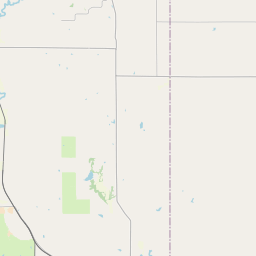Civil War Memorial
Historical marker location:





April 12, 1861: The Civil War begins with the Confederate attack on Fort Sumter, located in South Carolina's Charleston Harbor.
April 15, 1861: President Abraham Lincoln issues a call for 75,000 volunteers to serve in the Union Army to suppress the rebellion.
May 24, 1861: The first major land battle, known as the First Battle of Bull Run (or First Battle of Manassas), takes place in Virginia. It ends in Confederate victory.
September 17, 1862: The Battle of Antietam in Maryland becomes the bloodiest single-day battle in American history, with heavy casualties on both sides. The Union forces, commanded by General George McClellan, manage to halt Confederate General Robert E. Lee's advance into Union territory.
January 1, 1863: President Lincoln issues the Emancipation Proclamation, declaring that all slaves in Confederate-held territories are to be set free. However, the proclamation does not immediately free all slaves in the United States.
July 1-3, 1863: The Battle of Gettysburg in Pennsylvania takes place, resulting in a significant Union victory and inflicting heavy casualties on Confederate forces. It marks a turning point in the war.
November 19, 1863: President Lincoln delivers the Gettysburg Address, emphasizing the principles of liberty, equality, and the preservation of the Union.
April 9, 1865: General Robert E. Lee surrenders to Union General Ulysses S. Grant at Appomattox Court House in Virginia, effectively ending the Civil War.
April 14, 1865: President Lincoln is assassinated by John Wilkes Booth while attending a play at Ford's Theatre in Washington, D.C.
May 10, 1865: Confederate President Jefferson Davis is captured, signaling the collapse of the Confederate government.
December 6, 1865: The Thirteenth Amendment to the United States Constitution is ratified, officially abolishing slavery throughout the country.
While this timeline provides an overview of key events, it is important to note that the Civil War spanned over four years, from 1861 to 1865, and encompassed numerous battles, campaigns, and political developments that shaped the course of American history.
The famous outlaw Jesse James was killed in St. Joseph, Missouri, which is just across the border from Kansas.
One of the most significant events in the county's history was the Kansas-Nebraska Act, which allowed settlers to decide whether their state would be free or slave. This led to a violent period known as "Bleeding Kansas," as pro-slavery and anti-slavery advocates clashed. The county was a major battleground during this time, with the infamous Pottawatomie Creek massacre occurring in 1856, led by abolitionist John Brown.
In the years following the Civil War, Pottawatomie County experienced growth and development. Railroads were built, connecting the area to larger markets and facilitating the transportation of goods. Agriculture became a major industry, with wheat, corn, and livestock being the main products. Several towns, including Wamego, Westmoreland, and St. Marys, were established during this period.
The county continued to develop throughout the 20th century. The construction of Tuttle Creek Dam in the 1960s brought flood control and recreational opportunities to the area. Today, Pottawatomie County is a thriving community, with a diverse economy that includes agriculture, manufacturing, and services. The county is also known for its natural beauty, with Tuttle Creek State Park and the scenic Flint Hills attracting visitors from near and far.
Pottawatomie County Timeline
This timeline provides a condensed summary of the historical journey of Pottawatomie County, Kansas.
- 1854 - Pottawatomie County is created as part of the Kansas Territory
- 1857 - First settlers arrive in the area
- 1861 - Pottawatomie County officially becomes a county in the state of Kansas
- 1880s - Railroads are established in the county, boosting transportation and economic growth
- 1893 - The city of Westmoreland becomes the county seat
- 1930s - Pottawatomie County is affected by the Great Depression, leading to economic challenges for its residents
- 1951 - The Tuttle Creek Dam is completed, creating Tuttle Creek Lake and providing flood control and recreational opportunities
- 1960s - Kansas State University's football stadium, Bill Snyder Family Stadium, is constructed in Pottawatomie County
- 1980s - The county experiences population growth and increased development
- 2002 - The county's first casino, Prairie Band Casino & Resort, opens on the Potawatomi Reservation